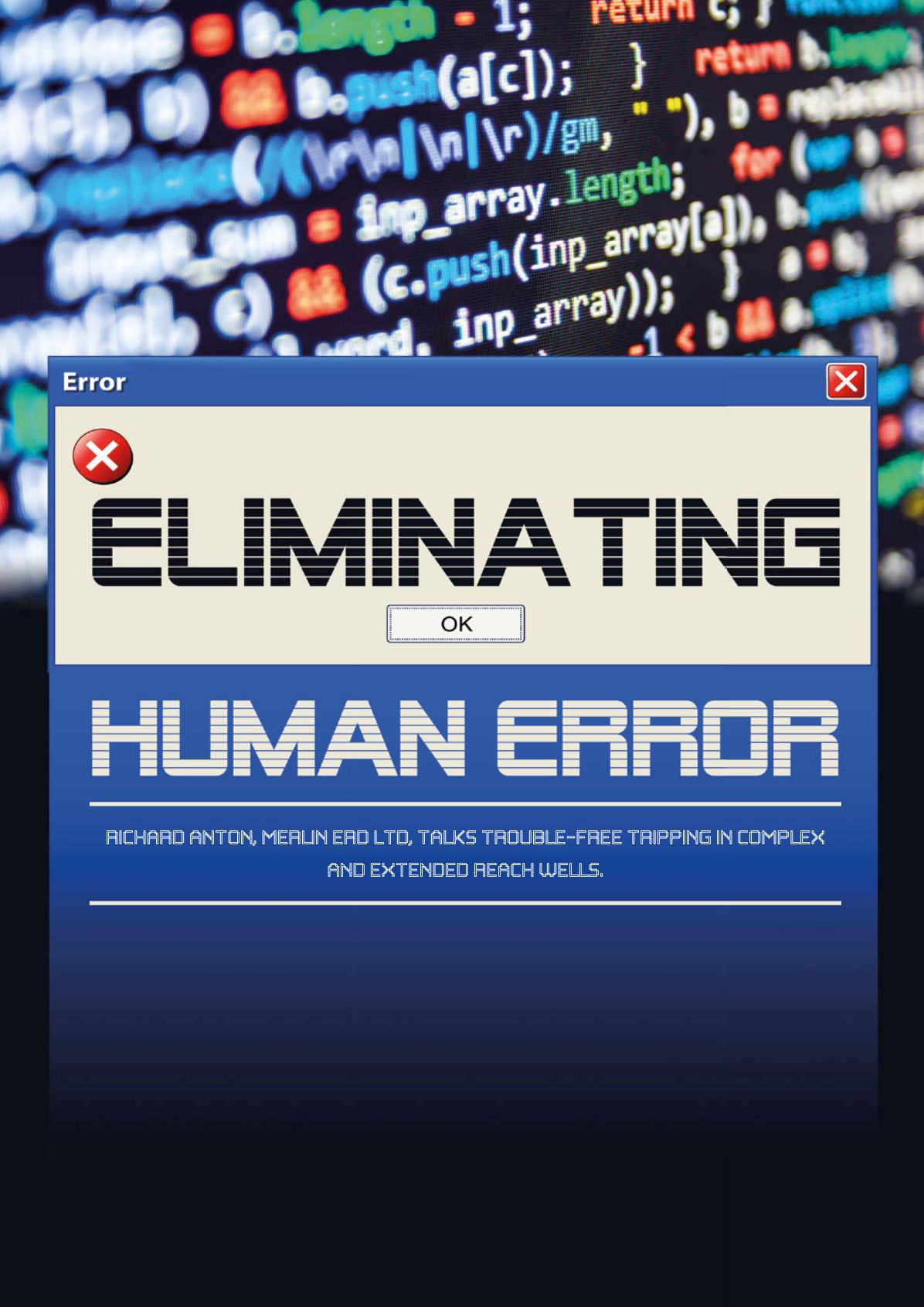
A
dvances in directional drilling technology have
enabled a rapid expansion in the use of extended
reach wells to reach increasingly distant targets, while
complex 3D trajectories are now being drilled routinely in
order to maximise reservoir contact while minimising surface
infrastructure requirements, often in geologically complex
reservoirs.
The issue
Industry statistics have long highlighted the issue of high
impact non‑productive time (NPT) events which occur during
or following trips out of hole. Such trips may be performed
simply to change a drill bit or bottom hole assembly, or because
total depth has been reached and it is necessary to proceed to
the next operation such as running casing. As interval length
and complexity increases, so do the consequences of failing to
ensure a suitable tripping environment – remedial operations
on complex wells can be costly.
Merlin ERD Ltd has conducted numerous problem reviews
on behalf of operators seeking to identify the cause of
problematic trips, including many which resulted in side‑tracks.
Whilst the immediate cause of such incidents can vary
enormously, every review conducted has concluded without
exception that human error has been a contributory factor.
These human influences take many forms, from the driller who
fails to respond appropriately to drag indicators, to the drilling
engineer who has not identified or adequately mitigated known
risks during well planning.
This article highlights some of the most frequently identified
causes of poor tripping environments, and provides some
RICHARD ANTON, MERLIN ERD LTD, TALKS TROUBLE-FREE TRIPPING IN COMPLEX
AND EXTENDED REACH WELLS.
|
31


